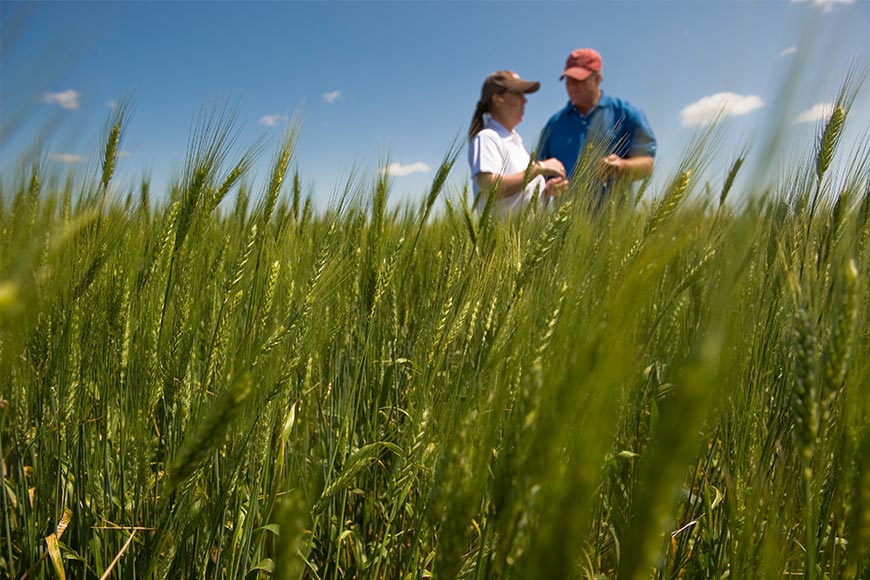Wheat’s Best Friend: Canola

Rotating your wheat with canola can provide big benefits. Planting canola breaks the cycle of insects and disease present in wheat-on-wheat acres so fields are cleaner when you return with wheat a year or two later. Canola’s large taproot also helps increase water infiltration, and improves the growth and soil penetration of future crop roots.
Here are three steps to optimize yield potential with a canola/wheat rotation.
1. Control weeds.
Weed control in wheat can be difficult. By taking advantage of the Genuity® Roundup Ready® trait in CROPLAN® HyCLASS® canola seed as a rotation on your farm, you can reduce weed competition by applying WinField® Cornerstone® 5 Plus herbicide. This will make for a cleaner field when you rotate back to wheat.
Adding InterLock® adjuvant to your treatment can improve canopy penetration. Class Act® NG® adjuvant can also be included in your tank mix to improve uptake and speed herbicide movement.
2. Provide adequate nutrients.
A NutriSolutions® tissue analysis, taken when canola greens up after winter dormancy, can show what nutrients your crop needs. Canola generally needs a minimum of 100 to 130 pounds of nitrogen and 30 pounds of sulfur to produce a 2,000-pound crop.
Depending on tissue analysis results, an application of MAX-IN® Ultra ZMB® or another MAX-IN® micronutrient product might be recommended by your agronomist. Also, insecticides can be tank mixed with micronutrient applications, so don’t forget to scout for pests when taking tissue samples to save a trip across the field.
3. Harvest on time.
A timely harvest limits pod shattering, which in turn reduces the amount of volunteer canola that will pop up in next year’s wheat crop. To achieve a well-timed harvest:
Here are three steps to optimize yield potential with a canola/wheat rotation.
1. Control weeds.
Weed control in wheat can be difficult. By taking advantage of the Genuity® Roundup Ready® trait in CROPLAN® HyCLASS® canola seed as a rotation on your farm, you can reduce weed competition by applying WinField® Cornerstone® 5 Plus herbicide. This will make for a cleaner field when you rotate back to wheat.
Adding InterLock® adjuvant to your treatment can improve canopy penetration. Class Act® NG® adjuvant can also be included in your tank mix to improve uptake and speed herbicide movement.
2. Provide adequate nutrients.
A NutriSolutions® tissue analysis, taken when canola greens up after winter dormancy, can show what nutrients your crop needs. Canola generally needs a minimum of 100 to 130 pounds of nitrogen and 30 pounds of sulfur to produce a 2,000-pound crop.
Depending on tissue analysis results, an application of MAX-IN® Ultra ZMB® or another MAX-IN® micronutrient product might be recommended by your agronomist. Also, insecticides can be tank mixed with micronutrient applications, so don’t forget to scout for pests when taking tissue samples to save a trip across the field.
3. Harvest on time.
A timely harvest limits pod shattering, which in turn reduces the amount of volunteer canola that will pop up in next year’s wheat crop. To achieve a well-timed harvest:
- Spread the maturity of your canola crop across your acres to ensure that it all won’t be ready to harvest at the same time.
- Prepare for different harvest field conditions and weather scenarios, and determine which harvest method — direct combining, swathing or pushing — makes the most sense for your fields.


